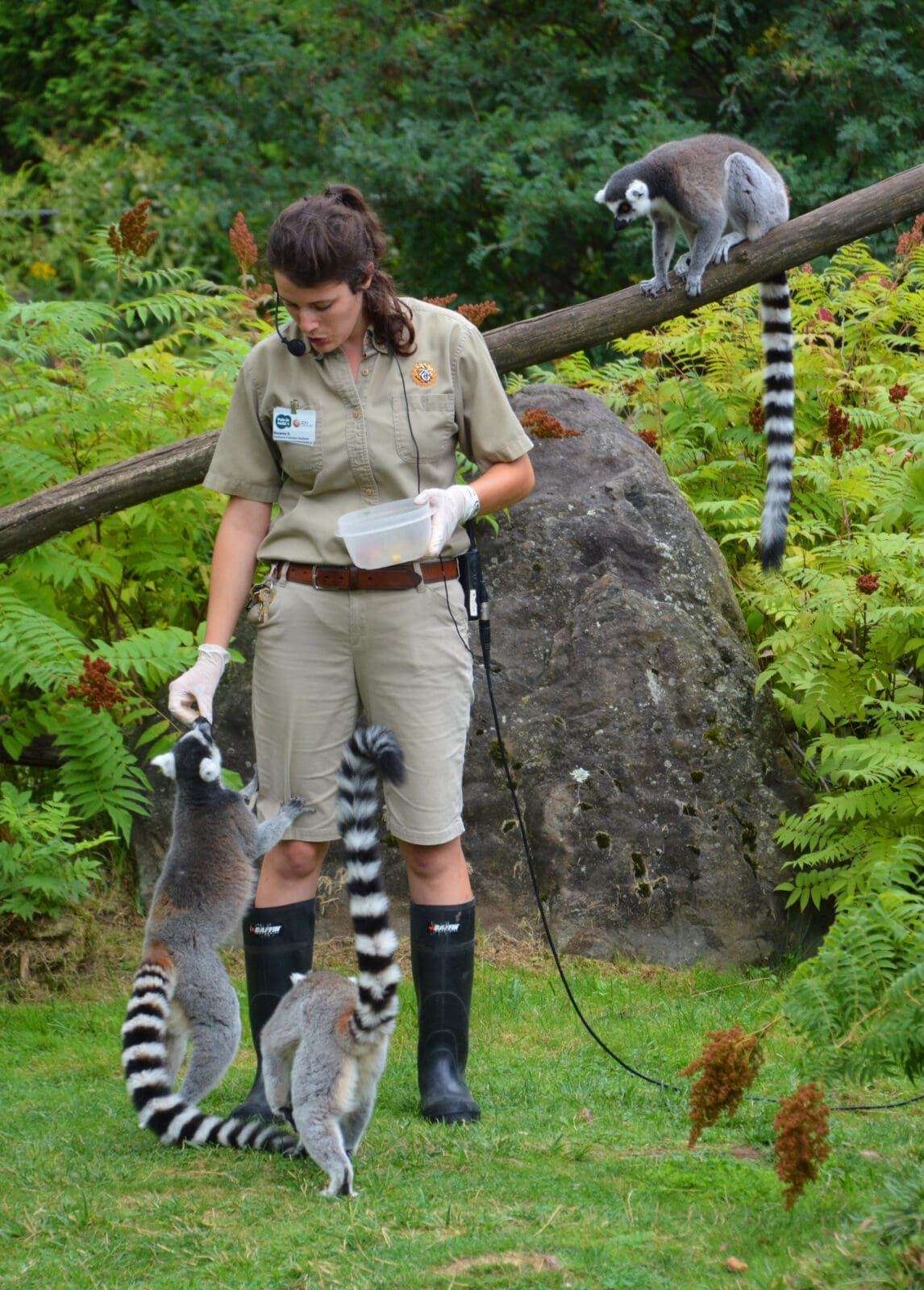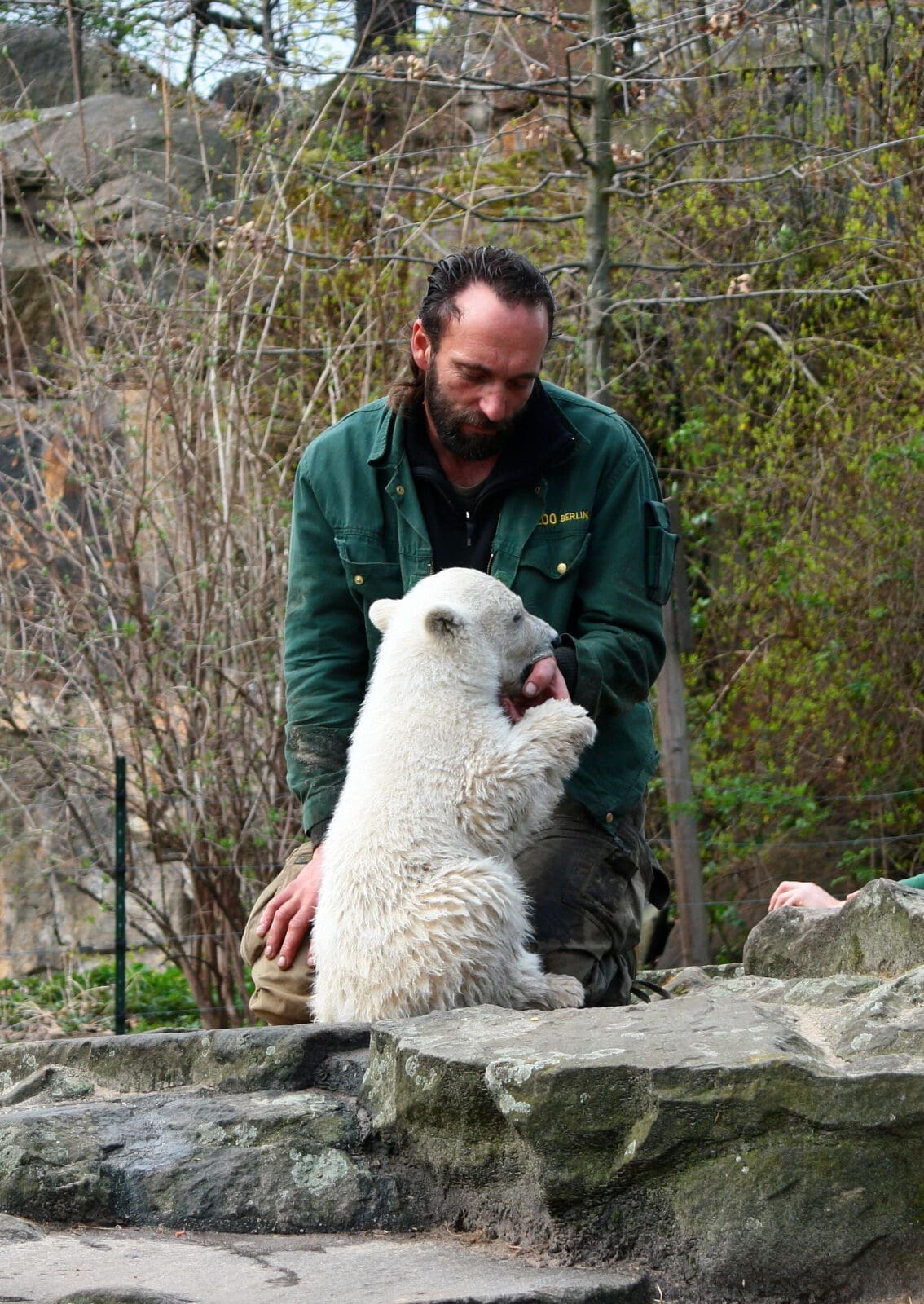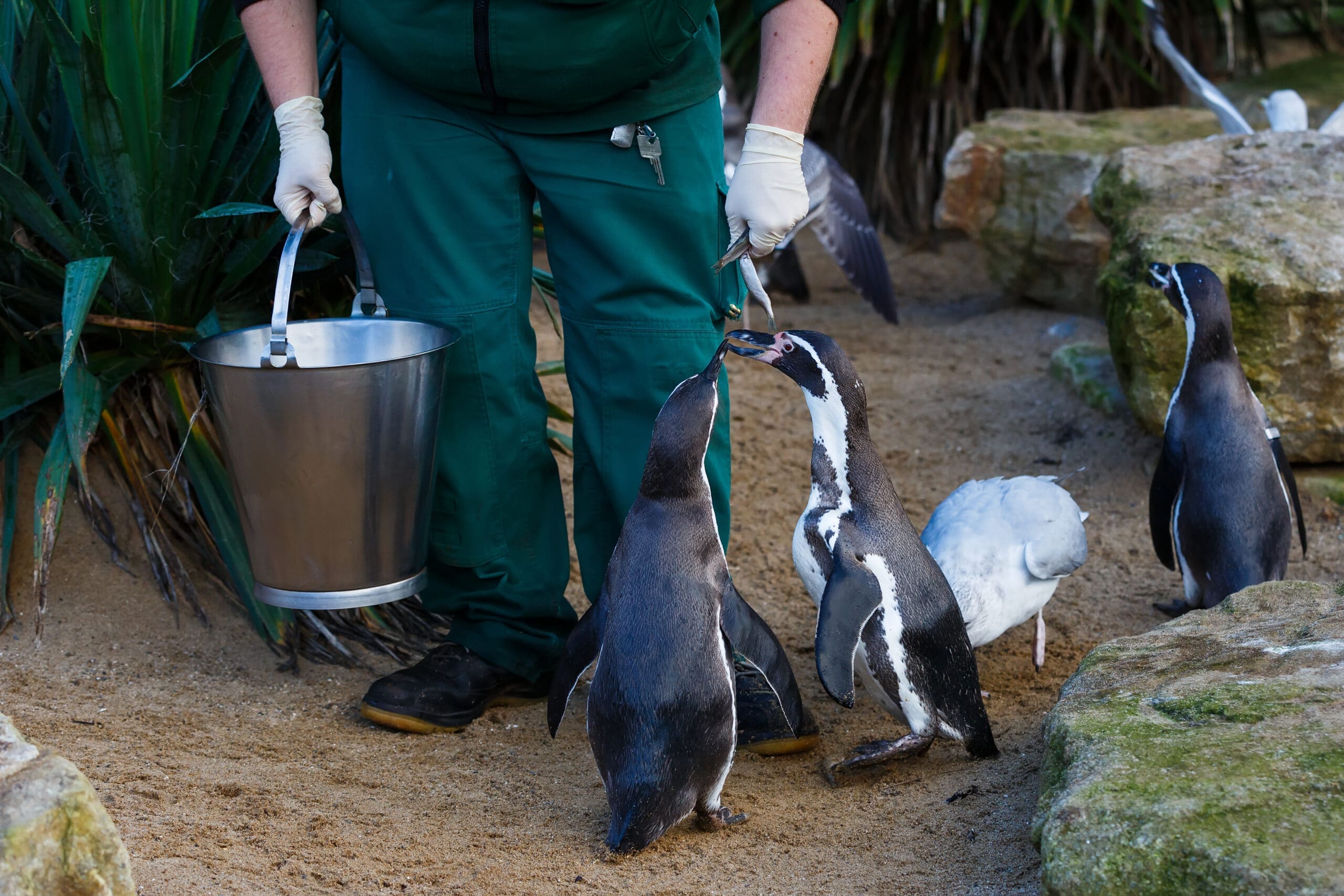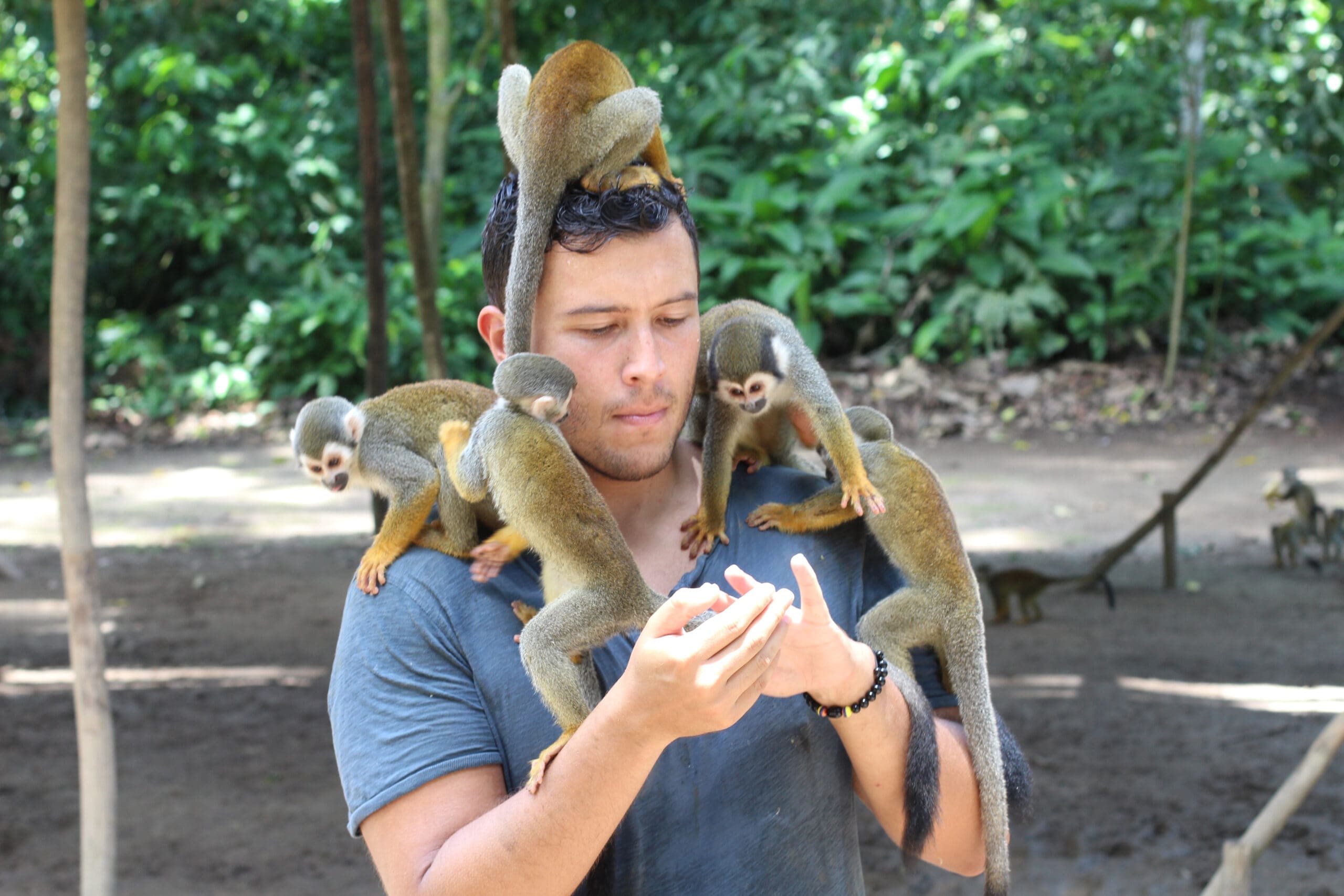Zookeeper CV Guide
Everything you need to know about getting the perfect Zoo Keeper CV
A zookeeper has various responsibilities related to captive animal care and management. They also interact with the public through educational programs to raise awareness about wildlife conservation. It is a rewarding yet demanding job that requires a deep passion for animal welfare and conservation. Recruiters will look for these attributes. Therefore, it is important to demonstrate these key elements in your CV.
Whether writing a CV for the first time or updating it for new opportunities, you want to ensure it is strong, well-crafted and showcases your qualifications, skills, and experience. Your CV helps potential employers see the value you can bring to their organisation, which can help you stand out in a competitive job market.
In this article, we will provide guidance on how to write a zookeeper CV, what to include, some tips and an example to help you get started. It will hopefully increase your chances of securing an interview and ultimately landing the zookeeper job you desire.
In this Zookeeper CV guide
What to include in a Zookeeper CV
Before considering what to include in your CV, make it your own and provide specific details. You may come across many generic CV examples and templates online, and if you choose to use any of them, you must tailor them accordingly. If you use a generic CV and do not customise it, recruiters may spot this, which can mean unsuccessful applications and missed opportunities.
When you take the time to think carefully about your CV and prepare it thoughtfully, it can demonstrate to recruiters that you are serious about the role and committed to the field. It also shows professionalism and attention to detail and helps you stand out from other candidates, as zookeeper jobs are competitive.
Creating a CV and knowing what to include can feel daunting, but breaking it into manageable sections can make it much easier. Here is a step-by-step guide to help you get started:
Contact information
Let us start with the easier part of your CV, your contact information, which should be at the top of the page. You want to make it easy for employers to contact you, so ensure it is clear and accurate.
When adding your contact information, you should include your full name, location, email address and phone number, but bear the following in mind:
- You do not need to add your full address; your town, city or county is sufficient.
- Use a professional email address and avoid nicknames, aliases and social media handles.
- Ensure your phone number is current and you regularly check calls and messages.
If you have a LinkedIn profile, website or an online portfolio, you can add these where relevant.
You should avoid adding your date of birth, a photo and personal information, such as marital status, gender, nationality or religion. This information is irrelevant to your professional qualifications, can lead to bias and may detract from important parts.
Remember to check that your contact details are current so employers can promptly reach you.
Professional summary
Below your contact information should be your professional summary, which is also known as a career objective statement, personal statement, or professional profile. It is a 3-5 line paragraph emphasising your most relevant qualifications, skills, experiences and achievements, making it easier for employers to see how you fit the zookeeper role.
A well-crafted summary can pique the employer’s interest, encouraging them to read the rest of your CV in more detail. When you craft your professional summary, you want to ensure it is to the point, engaging and tailored to the zookeeper position. Basically, you are telling the employer why you are the best person for that job. Here are some tips to help:
- Begin with a sentence that captures who you are and your experience level. Mention your job title and years of experience.
- Avoid generic statements and focus on your unique qualifications.
- Mention any hands-on experience with animal care, including specific tasks you have performed, such as feeding, cleaning or health monitoring.
- Showcase key skills for a zookeeper, such as animal husbandry, enrichment activities and public speaking.
- Highlight any notable achievements or contributions to animal welfare.
- Convey your passion for animal care and conservation. Employers want to see genuine dedication to the field.
Here is an example of a professional summary for a zookeeper:
“Dedicated and passionate zookeeper with over 3 years of experience in animal husbandry and wildlife conservation. Proven ability to provide excellent care for a diverse range of species, ensuring their health and well-being. Skilled in enrichment activities, habitat maintenance, and public education programs, with a strong commitment to promoting animal welfare and conservation efforts.”
Education
Your education should be the next section of your CV, or you can put your work experience first; it is at your discretion. This section informs employers of your academic background. It is important as they often look for specific qualifications or skills relevant to the position. It demonstrates your suitability for the role and provides a structured and standardised way for employers to assess your background.
When you add your education to your CV, you want to ensure you highlight your relevant qualifications, certifications and training and how they apply to the zookeeper role. List your qualifications in reverse chronological order, i.e. the most recent first, and you should include the following information:
- Formal education – includes any degrees, diplomas, A levels, apprenticeships and GCSEs. You should add the following:
- Qualification or degree name, e.g. BSc (Hons) Zoology.
- Institution name, e.g. The University of Liverpool.
- Attendance or graduation dates, e.g. September 2019 – June 2022.
- Relevant coursework (optional), e.g. Molecular Biology, Ecology, Genetics, Wildlife Conservation, Animal Care, etc.
- Honours, grades or awards (optional), e.g. 2:1.
- The title of your thesis or dissertation (if applicable).
- Additional training – highlight any other training, certifications or workshops relevant to zookeeping, e.g. first aid for animals or wildlife handling. It could include short courses, seminars or conferences attended. Give the course name, location of training and date of completion.
If you are a school leaver or a recent graduate, include more details in this section to compensate for your lack of work experience. If you have already worked in zookeeping or a related field, you may want to focus on your work experience and have a shorter education section.
If you have gaps in your employment history, listing your education can show that you were actively engaged in learning and developing your skills during that time.
Work experience/employment history
The next section of your CV is your work experience. It enables you to showcase relevant skills, knowledge, achievements and contributions gained in previous roles. It also highlights your dedication and passion for the field.
When you add your work experience to your CV, it should be in reverse chronological order (most recent first), like the education section, to allow employers to see your most relevant experience first. For each position, include the following:
- Job title: Begin with your job title, e.g. “Zookeeper”.
- Employer/organisation name: Name of the zoo or organisation.
- Location: Town, city or county.
- Dates of employment: Clearly indicate employment start and end dates (month and year).
- Responsibilities: Highlight key duties and tasks you performed (aim for three to five bullet points and use action verbs to describe your tasks), e.g.:
- Daily care and feeding of various animals, including dietary planning and preparation.
- Maintenance and cleaning of animal enclosures to ensure a safe and hygienic environment.
- Monitoring animal health and behaviour and reporting any concerns to veterinary staff.
- Educating visitors about wildlife conservation and animal behaviour.
If you are applying for your first job and have little or no work experience, do not worry. You can use this section to showcase any volunteering, projects, coursework and internships. We will cover how to describe your experience later.
Key skills and achievements
The next section of your CV is your key skills and achievements, which highlight your expertise and capability to perform the duties of a zookeeper. It also provides concrete evidence of how you successfully applied your skills previously and what your accomplishments were, which can help you stand out from other candidates.
So, how do you add your key skills and achievements to your CV? First, ensure that they are tailored to match the specific requirements of the zookeeper role and emphasise those most relevant to the job description. You also want to include relevant hard and soft skills, for example:
- Hard skills – are specific, teachable abilities or knowledge that are typically easy to quantify and often acquired through education, training programs or on-the-job experience. Examples of hard skills for a zookeeper might include animal care, monitoring, veterinary skills, habitat maintenance, record-keeping and public speaking.
- Soft skills – are personal attributes that enable someone to interact and work effectively and harmoniously with others. Soft skills for a zookeeper might include communication, teamwork, empathy, compassion, problem-solving, patience and resilience.
It is important to read through the job description and highlight the skills the employer is looking for to see how yours are aligned. If you are applying for your first zookeeper job, focus on transferable soft skills as above and any hard skills acquired from your education.
Your relevant achievements, which are typically measurable, can be added to this section. Alternatively, you can add them to your work experience section under your previous responsibilities. We will look at how you can showcase your achievements later.
Many organisations use Applicant Tracking Systems (ATS), which pick up keywords in applications, so including these in your CV can help demonstrate your skills and increase your chances of passing through the ATS filter and a successful application. Keywords that may help include those covered in the hard skill section above. Again, look at the job description to identify the words they use.
Other information
The main sections of a CV typically include what we have covered so far. However, there is additional information you can include if it is relevant to the zookeeper role, have sufficient space on your CV, and you think it will maximise your chances of securing an interview. Here are some additional sections you may want to consider:
- Certifications and training – can include first aid, animal care or other professional training. You can add this information to the education section or detail it separately. If you include it, add the name of the training, provider and date, and ensure that your certifications are current.
- Professional development – list any relevant workshops, conferences or seminars you have attended to develop your knowledge and skills on zookeeping.
- Volunteer work – showcase any volunteer experience relating to animal care or wildlife conservation. You can add this to the work experience section if preferred. If you do include it, detail the name of the organisation, the dates you volunteered and your key duties and contributions.
- Publications and research – list articles, papers, research or projects related to zookeeping. You could also mention any presentations delivered on the topic.
- Professional associations – include memberships in professional organisations, associations and charities related to animals and zookeeping.
- Languages – list any additional languages spoken and proficiency levels.
- Interests and hobbies – include relevant interests and hobbies that align with the role of a zookeeper, e.g. wildlife photography, surveying, outdoor activities, etc.
Include relevant information demonstrating your commitment and passion for zookeeping to make you an attractive candidate to prospective employers.
References
Adding references to your CV enables potential employers to verify your qualifications, experience, skills, work ethic and character, and gives them confidence in your suitability for the role. Recruiting takes time and money, so they want to ensure you are credible.
The references section is usually the last in your CV. If you are struggling for space and the job posting does not ask for specific details, you can mention “References available upon request” under the heading. However, if asked to provide further information in your application, you can format it in the following way:
- Reference name – start with the name of your reference.
- Job title – include their current job title or the job title they held during your time working with them or when you were in education.
- Organisation – provide the name of the organisation they work for.
- Contact information – list their email address and phone number.
- Relationship – briefly mention how you know the reference and your relationship, e.g. tutor, supervisor, colleague, mentor, etc.
Most organisations will ask for two references. Select people who can vouch for your qualifications, skills, experience and character, as this can differentiate you from other candidates and increase your chances of securing the position.
Always ask for permission before including their details on your CV, and ensure that the contact information for your references is up-to-date and accurate.
Tips for writing a Zookeeper CV
Writing a CV for a zookeeper position can seem daunting, whether crafting one for the first time or updating one, but it is not once you understand the format, structure and detail required. Some candidates make simple and avoidable mistakes, which can result in an unsuccessful application. However, there are some general things to consider to avoid the same errors. Here are some tips to help you write your CV and increase your chances of getting an interview:
- Make it specific – tailor your CV to the zookeeper position and the organisation’s goals and values. Read through the job description to identify the qualifications, skills, experience and attributes they are asking for and include relevant keywords and information in your CV.
- Keep it clear and concise – recruiters will typically be reviewing many applications, so it is crucial to keep your CV concise and a maximum of two pages. Ensure your qualifications, experience, contributions, and skills stand out and avoid adding irrelevant information and vague statements.
- Be honest – a CV should accurately reflect your academic, professional and personal history and not contain over-embellishments, falsehoods and misleading information. Always be truthful on your CV, as not being honest can have serious repercussions.
- Use action verbs – start each bullet point with strong action verbs like “managed,” “developed,” “implemented,” or “achieved” to make your accomplishments stand out. Avoid phrases such as “hardworking” or “team player”, as these are overused and lack specificity.
- Use professional and consistent formatting – you can help your CV stand out by:
- Using a clean, professional layout with clear sections, headings and bullet points.
- Using professional, simple and clear language, avoiding slang or overly casual expressions.
- Avoiding excessive use of colours and fonts.
- Sticking to a simple font like Arial, Calibri or Times New Roman and consistent size, e.g. 10-12 points.
- Ensuring your CV has adequate spacing to make it more visually appealing.
- Avoiding using photos, as it can distract and lead to bias.
- Using a digital format where possible. Save and send your CV as a PDF to ensure the formatting stays intact when viewed on different devices.
- Make sure you proofread and review your CV – double-check for spelling and grammatical errors and proofread it before sending, as a CV full of mistakes will not create a good impression. Ask a family member, friend or mentor to review your CV and give you feedback.
Dedicating time to craft an outstanding CV can make all the difference in landing your dream zookeeper job.

Focus on achievements
Achievements on a CV are specific accomplishments or successes that demonstrate your skills, abilities and impact in previous roles. Including achievements helps to show potential employers what you are capable of and how you can add value to their organisation and the zookeeper role. Here are some examples of how you can focus on your achievements in your CV:
- Think about the specific achievements in your past roles relevant to a zookeeper position. These could be related to animal care, conservation efforts, visitor education, public engagement or team leadership.
- Start each achievement with a strong action verb to effectively convey your contributions, e.g. “Implemented,” “Led,” “Developed,” “Achieved,” “Increased,” “Reduced”, etc.
- Give enough context to help the reader understand the significance of your achievement. Briefly describe the situation or challenge you faced, e.g. “Led a habitat restoration project for the zoo’s primates”.
- Whenever possible, use numbers, percentages or other metrics to quantify the results of your achievements to clearly demonstrate the impact and provide concrete evidence of your contributions, for example:
- Implemented a new feeding schedule for primates, improving their health and reducing feeding times by 20%.
- Developed an enrichment program for large carnivores, resulting in improved animal welfare and reduced stereotypic behaviours by 30%.
- Designed and delivered educational programs that increased visitor awareness of wildlife conservation by 20%.
- Tailor your achievements to the skills and qualifications detailed in the job description. Highlight those most relevant to the role and provide specific examples detailing what you did, how you did it, the outcome and the impact.
You can also use the STAR (Situation, Task, Action, Result) method to help you structure your achievements, for example:
- Situation: What was the context or problem?
- Task: What was your responsibility?
- Action: What actions did you take to address it?
- Result: What were the outcomes or benefits?
Focussing on your achievements like this can make your CV more compelling, demonstrate your value as a zookeeper and help you stand out from other candidates.
Describe your experience
Describing your experience on a zookeeping CV is mportant because it demonstrates your qualifications, skills, and suitability for the role and organisation. It also showcases your unique strengths, accomplishments and contributions, which can set you apart from other candidates and increase your chances of landing the job. Here are some ways you can describe your experience in your CV:
- Review the job description and tailor each section of your CV to your specific experiences and the job you are applying for. Only include experiences relevant to the zookeeper role.
- Briefly mention your key experiences in your professional summary to grab the employer’s attention.
- In the work experience section, focus on your achievements and responsibilities in each role, especially where you have positively impacted zoo animals, colleagues, the public, etc.
- Include any relevant voluntary experience and highlight the difference you made in these roles.
If you have little or no direct experience working in zoos, do not worry. You can still create a compelling CV by emphasising your transferable skills, relevant education and related volunteer work or internships. Here are some pointers to describe your experience in this situation:
- Education – highlight your qualifications, degrees and any relevant coursework or projects related to animal science, biology or environmental studies. Mention any honours or distinctions you have received.
- Related experience – include any work experience demonstrating your transferable skills, i.e. part-time jobs, internships, placements or volunteer work. Focus on roles related to animal care, wildlife conservation, educational outreach, etc. For example, “volunteered at a wildlife rescue centre and assisted in the daily care of various animals, including feeding, cleaning enclosures and monitoring health”.
- Transferable skills from other jobs – highlight experiences from other roles where you gained transferable skills useful for zookeeping, such as customer service, education or any position involving physical labour, outdoor work and attention to detail.
- Professional development and certifications – mention any workshops, seminars, online courses or additional training related to animal care, wildlife rehabilitation, zoology, etc.
- Extracurricular activities – include any extracurricular activities that showcase your skills and interests, e.g. involvement in wildlife conservation projects, animal science clubs, experience days in zoos, etc.
- Demonstrate passion – write a professional statement emphasising your relevant education, transferable skills and commitment to the field. For example, “Dedicated animal care enthusiast with a background in biology and volunteer work at animal rescues, eager to contribute to [Zoo Name]’s mission. Strong communication and teamwork skills, developed through customer service roles, and well-suited for engaging with visitors and supporting conservation efforts. Passionate about animal welfare and committed to providing exceptional care for diverse species”.
These activities can help you build a well-rounded skill set and demonstrate your commitment to animal care and conservation, making you a strong candidate for a zookeeper position, even without direct experience.

Tailor your CV to the Zookeeper position
One of the mistakes that candidates make is not tailoring their CV to the position they are applying for. It is essential to tailor your CV to the specific zookeeper job, as it demonstrates to employers that you have done your research and directly addressed the requirements and responsibilities of the role. It also highlights your relevant skills, experiences and achievements that align with the job description.
When tailoring your CV, you want to capture the attention of recruiters and here are some ways you can effectively achieve this:
- Study the job description – carefully read the job description and note the key skills, qualifications and experiences the employer has mentioned in the posting. Compare and match your academic, professional and personal history, and add relevant details to your CV.
- Research the organisation – understand the organisation’s goals, ethos, values and specific needs. Visit its website and social media platforms and look at recent news, projects or achievements.
- Customise sections of your CV – there are several ways to do this, e.g.:
- Craft a professional summary that reflects your passion for animal care and addresses how your background, skills and values align with the organisation’s needs. Mention specific aspects of the organisation and its goals that resonate with you.
- Customise the bullet points in your work experience section and align your experiences with the job requirements. Use the same language as the job description when possible, e.g. if it details animal care or public education highlight your experience in these areas.
- Use specific achievements relevant to the role, e.g. if the job posting details working with specific zoo animals highlight related achievements. For example, “Successfully bred endangered red pandas, increasing the population by 20%”.
- Match your skills section to the keywords in the job description and focus on the skills most relevant to the position, e.g. if it highlights public engagement and speaking skills, emphasise your experience in that area.
- If the job description mentions specific certifications, training or professional memberships, include these in your CV.
- Use keywords and phrases – incorporate keywords and phrases from the job description into your CV to ensure they align with the employer’s expectations, e.g. animal care, wildlife conservation, habitat maintenance, public education, etc. It also increases your chances of passing through applicant tracking systems (ATS) that filter applications based on keywords.
- Do not forget to tailor your cover letter – customise your cover letter for each application, highlighting specific experiences, achievements and skills that align with the role. Use examples from your CV to support your claims and detail what makes you a perfect fit for the zookeeper position.
By customising your CV to each zookeeper job, you show potential employers that you are committed and dedicated to the position and genuinely interested in contributing to the organisation’s success. It can increase your chances of a successful application, getting an interview invitation and being offered the role.
Good luck!



